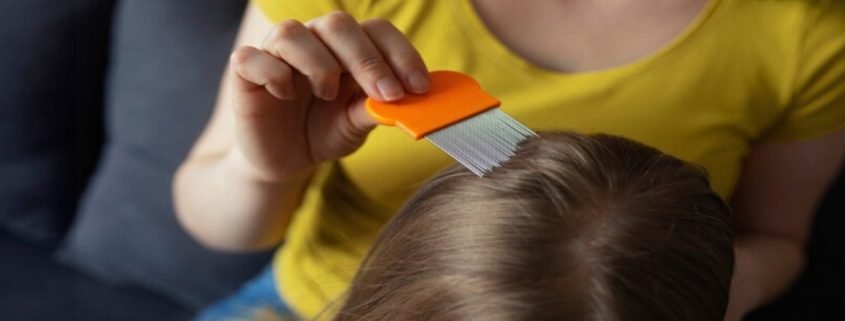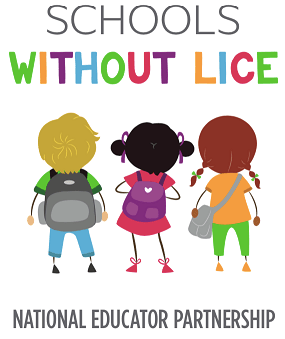No-Panic Guide To Head Lice Treatment
Head lice are tiny insects found on the human scalp. To survive, they feed on blood from the scalp. The crawling and biting from lice causes the infected person to itch and scratch at their head. Itching is the most common symptom of head lice and is a major sign that someone may have it. Unfortunately, the itching sensation usually occurs after having already had lice for several weeks. By this time, the infestation may be severe. Having lice in your home can cause feelings of stress, frustration, and worry. This is especially true if you’ve never dealt with a lice situation before. In this guide, we’ll look at options for treatment and steps to take to avoid re-infestation.
About Head Lice
Before we look into what to do when you or a family member has lice, it is helpful to first understand these insects. The most common way that lice are spread is through head-to-head contact with another individual who has lice. Lice can’t jump or fly, so they transfer heads when hair strands touch. This type of contact frequently occurs at schools and daycares, which is why lice are found more in children than adults. Children often spread it while playing together, but could also spread it during sports or sleepovers. A lack of cleanliness and hygiene is not the reason for getting lice. These insects live by sucking on human blood and staying close to the human scalp. There are three stages of the life cycle that lice may be found in:
- Nits are head lice eggs that are attached to the base of the hair. Colored eggs mean the insect hasn’t hatched yet and a clear shell means it has. Nits are laid by an adult female head louse.
- Nymphs are immature lice that hatch from the nits. Nymphs are smaller than adult lice until they mature about 9-12 days after hatching. They must feed on blood to survive.
- Adults are fully grown lice with six legs and are tan or gray in color. Like nymphs, adult head lice must suck on blood to live. They usually live about 45 days on a human head but will die in 1-2 days if they fall off. The females are larger than the males and can lay about 6 eggs a day.
All lice in any stage in the head need to be dead to completely eliminate the infestation.
Lice Treatment
Now that you know how you or your family member got lice and you know what to look for, let’s discuss how to begin treatment. The most common and recommended method for an at-home remedy is an over-the-counter head lice treatment kit. These kits usually come with a lice comb and a liquid remedy in the form of shampoo. The lice comb is an important tool to use since the teeth on a lice comb are closer together than the teeth on a typical comb. This makes it easier to remove lice and nits. When you begin the treatment, be sure to closely follow the directions provided in your kit. Splitting the dose in half or skipping a step risks failure for it to work. Also, keep in mind that one application of the treatment does not mean you’re done. You should examine the hair 8-12 hours after the first treatment to check for progress. A second application is usually needed to kill the recently hatched nymphs. Another important step to take is to comb through the hair every day for at least two weeks. Continue to do this even if you think all the lice are gone. These insects and their eggs can be difficult to see, so continued examination and combing help eliminate them for good.
Do’s And Don’ts For Eliminating Head Lice
If this is your first time dealing with a lice infestation, you may not know what additional steps to take other than a treatment kit. You have probably heard some myths about lice remedies, so read through these factual tips to further ensure elimination:
- Do examine and treat family and friends. To avoid spreading lice and getting it again, those that have been in close contact with the infected individual should be notified. They should then be examined daily for several weeks after exposure. There is no need or benefit to applying a head lice treatment kit on someone who does not have it.
- Don’t try DIY remedies. You may come across some home remedy suggestions, but these treatments are not proven to be effective by scientific evidence. Some people try to treat lice using items found in the pantry such as mayonnaise and vinegar. These methods are time-consuming, messy, and wasteful. It is a better option to purchase a treatment kit recommended by dermatologists.
- Do be proactive about the problem. Small, temporary changes can help keep the lice contained until it is completely gone. Avoid hugging and other close contact with the infected individual. It is also important to regularly check the head of each person living in the house. Look closely for nits as they can be difficult to find because they are so tiny and resemble dandruff and scabs. Even though lice can only be transmitted from head-to-head contact, it may give you peace of mind to wash pillows, towels, blankets, and similar items. Having a lice infestation in your home may bring a feeling of dirtiness, so cleaning items may relieve some mental stress in the unfortunate situation.
- Don’t continue to apply treatment if only nits are present. If no live insects are seen three weeks after treatment, the head lice have most likely been eliminated. The eggs would have hatched already if they were alive. Head lice treatment kills nits as well as crawling lice, so even if nits are still visible, it doesn’t mean they are going to hatch. You can wet your head and liberally apply conditioner to easily comb the leftover nits out.
Professional Help
If you have attempted an over-the-counter remedy and still suffer from an infestation, it may be time to contact a head lice treatment center. Or maybe you want to skip the home treatment altogether and leave it to the professionals. At Fresh Heads Lice Removal, we provide fast relief from lice so that you and your family can return to normalcy. Contact us today at any of our three locations. We can be found in Orlando and Jacksonville Beach, Florida, and in Savannah, Georgia.
Schools Without Lice
At Fresh Heads Lice Removal, our mission is to get rid of lice in schools across the United States. We’ve partnered with the Lice Clinics of America to create the Schools Without Lice program. Through this program, we provide school nurses and teachers with free screenings, resources, and treatments. Together, we can have schools without lice!















